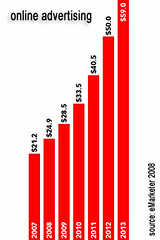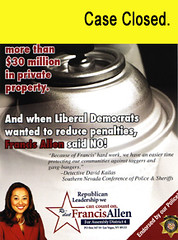It’s no surprise that Kohl’s and JCPenney are reevaluating their newspaper-circular strategy. online advertising has been chasing newspapers for some time.
Losing even a small share of two retail giants will hurt. Last year, JCPenney spent an estimated $149 million in newspaper advertising. Kohl’s spent $136 million. Like many companies, these two retailers are finding that online marketing works.
Since July, JCPenney has seen steady increases in site traffic since July. Kohl’s is up slightly during the same period. The appeal of both sites seems to be their ability to attract online shoppers and entice online window shoppers, with the latter group sourcing online catalogues before visiting brick-and-mortar stores.
Their reasons are simple enough. They can save travel time and money when they know which retail store is having a sale or what particular styles might be in stock. In other words, consumers don’t have to visit four or five stores in person.
Newspapers aren’t dead. Not by a long shot.
While newspapers continue to be hit, they aren’t dead. Early online adopters such as The New York Times seem to be well ahead of the curve. Sure, online advertising revenue has yet to make up the diminishing print revenue, even for The New York Times as Scott Karp, creator of Publishing 2.0, pointed out. Stuff that the Washington Post has been covering even longer.
However, it seems to me that newspapers will eventually make up the losses as online advertising doubles in the next five years, spurred by the realization that they need their own version of product placement — advertising buys that are tied to specific subjects and stories.
In other words, if newspapers can dominate search terms and continue to lead as sourced content, then advertisers will be there. It makes more sense for marketers than the current model, which used to work when people spent better than a few minutes glancing at headlines or waiting for a friend to prompt them to read an actual story. It requires some to rethink media buys.
Ergo, instead of JCPenney relying on newspapers to carry a truncated circular to your door, it relies more heavily on online newspapers to provide content along with direct messages that are designed to entice online readers to visit an entire online catalog. (For example, a back-to-school sale advertisement seems suited to stories about education or fashion.)
Done right, a future JCPenney site will not only provide you the option to buy online, but also let you know which brick-and-mortar store near you has that specific item in stock, and maybe which size. Who knows? You might even be able to place a hold on the item before you pick it up.

Losing even a small share of two retail giants will hurt. Last year, JCPenney spent an estimated $149 million in newspaper advertising. Kohl’s spent $136 million. Like many companies, these two retailers are finding that online marketing works.
Since July, JCPenney has seen steady increases in site traffic since July. Kohl’s is up slightly during the same period. The appeal of both sites seems to be their ability to attract online shoppers and entice online window shoppers, with the latter group sourcing online catalogues before visiting brick-and-mortar stores.
Their reasons are simple enough. They can save travel time and money when they know which retail store is having a sale or what particular styles might be in stock. In other words, consumers don’t have to visit four or five stores in person.
Newspapers aren’t dead. Not by a long shot.
While newspapers continue to be hit, they aren’t dead. Early online adopters such as The New York Times seem to be well ahead of the curve. Sure, online advertising revenue has yet to make up the diminishing print revenue, even for The New York Times as Scott Karp, creator of Publishing 2.0, pointed out. Stuff that the Washington Post has been covering even longer.
However, it seems to me that newspapers will eventually make up the losses as online advertising doubles in the next five years, spurred by the realization that they need their own version of product placement — advertising buys that are tied to specific subjects and stories.
In other words, if newspapers can dominate search terms and continue to lead as sourced content, then advertisers will be there. It makes more sense for marketers than the current model, which used to work when people spent better than a few minutes glancing at headlines or waiting for a friend to prompt them to read an actual story. It requires some to rethink media buys.
Ergo, instead of JCPenney relying on newspapers to carry a truncated circular to your door, it relies more heavily on online newspapers to provide content along with direct messages that are designed to entice online readers to visit an entire online catalog. (For example, a back-to-school sale advertisement seems suited to stories about education or fashion.)
Done right, a future JCPenney site will not only provide you the option to buy online, but also let you know which brick-and-mortar store near you has that specific item in stock, and maybe which size. Who knows? You might even be able to place a hold on the item before you pick it up.























